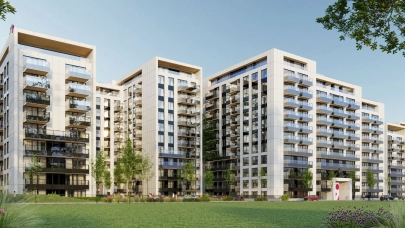
According to a report by Newmark Polska, development activity across the EU continued unabated, with more than 20 million sqm of modern warehouse and industrial space coming onto the market in 2022. Poland topped the league table with close to 4.4 million sqm. Germany and the Czech Republic also reported high supply levels: over 2 million sqm and 1.1 million sqm, respectively. Poland is also on the podium in terms of demand.
“Due to the changing geopolitical environment and the need for quick and efficient deliveries, the location, access to established transport corridors and intermodality became some of the key factors in the choice of sites for new warehouses,” says Jakub Kurek, Head of Industrial & Warehouse at Newmark Polska. “In the era of nearshoring and friendshoring, countries with substantial land banks such as Germany, Poland and France have a strong growth potential.”
Despite many lingering challenges, the EU warehouse and industrial markets continue to perform relatively strongly. In 2022, the take-up of warehouse space across the core EU markets totalled more than 35 million sqm, only around 5% lower than the historic peak recorded in 2021.
“Last year, most of the surveyed markets reported the second highest results for occupier activity since records began. Germany took the lion’s share of the total take-up (excluding renegotiations), accounting for 24% of all leasing activity, followed by the Netherlands and Poland - around 13% each,” says Agnieszka Giermakowska, Research & Advisory Director, ESG Lead, Newmark Polska.
Despite rising project financing costs, developer activity remains relatively strong. At the end of 2022, warehouse and industrial stock under construction amounted to almost 25 million sqm, of which close to 90% is scheduled for completion this year. In addition, nearly 60% of the space volume under construction has already been pre-let.
Some European markets are increasingly experiencing a shortage of land for new warehouse development. This is most notable in Scandinavia, where the overall vacancy rate is below 2% and in some CEE countries such as the Czech Republic (around 1%), Bulgaria (0.5% in Sofia) and Austria (below 0.5%).
In 2022, rents continued a trajectory of strong growth across European warehouse markets, rising by around 15% year-on-year and by 35-40% in some regions, especially for urban warehouses in such cities as Rotterdam, Munich, Berlin, London and Prague.
At the end of the fourth quarter of 2022, the highest rents were in Finland (€12-13/sqm/month), Norway (€11.5-13/sqm/month), Germany (€7.5-9.5/sqm/month) and the Netherlands (€6-9/sqm/month).
At the other end of the spectrum were warehouses in Central and Eastern Europe, including Poland, with warehouse rents of €3.5-5/sqm/month. Nevertheless, the highest warehouse occupancy costs in Europe were reported in the United Kingdom (€10-25/sqm/month).
Further rental growth is expected in 2023, especially for warehouses featuring advanced technological and ESG solutions delivering consistent savings through reduced utility consumption and lower service charges. Nevertheless, rents across the European continent are unlikely to rise by more than 10% over the year.
Key to the growth of the European warehouse market will be, among other things, further improvements to EU transportation systems, including the extension of the Trans-European Transport Network (TEN-T) of roads, railways, sea shipping and air routes.
Intermodality is also gaining in significance amid the growing ESG awareness and legislation requiring a reduction in greenhouse gas emissions. This will, in turn, result in a greater role of rail and sea transport in planning future supply chains.
Other sector drivers include EU subsidies and the Green Deal Industrial Plan for the Net-Zero Age – the EU’s response to the US Inflation Reduction Act.



